 Image search results - "aviation" Image search results - "aviation" |

Koku-Koen Station on the Seibu Shinjuku Line 航空公園駅
|
|

In front of Koku-Koen Station. Notice the paper plane sculpture and YS-11 prop plane.
|
|

Paper plane sculpture
|
|

Another sculpture in the Aviation Memorial Park.
|
|

Air Nippon YS-11 propeller plane. Donated by All Nippon Airways in 1997.
|
|

YS-11 propeller plane. Open to the public on certain days of the year.
|
|

Front of YS-11 propeller plane.
|
|

Propeller
|
|

Part of the original runway at the Tokorozawa Aviation Memorial Park. 所沢航空記念公園
|
|

Tokorozawa Aviation Memorial Park. 所沢航空記念公園
|
|

Tokorozawa Aviation Museum. The building on the left is an IMAX theater, and the larger structure on the right is modeled after a blimp on the inside to show retired planes and helicopters. Looks like jet turbine too. 所沢航空発祥記念館
|
|

In front of Tokorozawa Aviation Museum is a Curtiss-Wright C-46 transport plane.
|
|

The C-46 was used by the Japan Air Self-Defense Forces for cargo transport from the 1950s.
|
|

Monument for Japan's Birth of Aviation 日本の航空発祥の地・所沢
|
|

Monument for Japan's Birth of Aviation 日本の航空発祥の地・所沢
|
|

Back of Monument for Japan's Birth of Aviation日本の航空発祥の地・所沢
|
|
|
|

Inside the Tokorozawa Aviation Museum. You are greeted by a replica of Kai-1, Japan's first military plane developed, produced, and flown at Tokorozawa on April 5, 1911. It flew 10 meters high and 800 meters long for 80 sec. 会式一号機
|
|

Other more modern planes and helicopters are on display in the main exhibition hall. This is a North American T6G.
|
|

Sikorsky H-19
|
|

Japan Air Self-Defense Force helicopter.
|
|

Inside helicopter
|
|

Helicopter cockpit with glass bottom.
|
|
|

Above is a Piper L-21, below is Fuji T-1B.
|
|
|
|

Remains of a Nieuport 81E2.
|
|

Replica of Nieuport 81E2. This was first imported to Japan in 1918 and used to train Japanese pilots by a French mission.
|
|

Model of Japan's first motorized flight.
|
|

Turbine engines
|
|

Flight simulator (Not as good as Microsoft Flight Simulator.)
|
|

Control tower equipment.
|
|

Very impressive and educational aviation museum. Great for kids too.
|
|

Boeing 747 flight simulator (Not as good as Microsoft Flight Simulator.)
|
|

Exhibits on Tokorozawa's aviation history.
|
|

Pilots who flew at Tokorozawa.
|
|
|

Pilot's goggles and cap.
|
|

Map of Koku Ki'nen Koen Park or Aviation Memorial Park. Besides the museum, the large park has a baseball field, ponds, playground, and memorials.
|
|

Bust of General J.P. Faure, a Frenchman who trained Japanese pilots in 1919.
|
|

Bust of General J.P. Faure
|
|

Statue of Japanese aircraft mechanics who worked at Tokorozawa. This is where the aircraft maintenance hangar was.
|
|
|

Gifu-Kakamigahara Air and Space Museum has both outdoor and indoor exhibits of civilian and military airplanes, prototypes, replicas, and scale models (especially rockets). Opened in March 1996 near Japan Air Self-Defense Force Gifu Airbase. It's in a park-like area with a large hangar-type building filled with planes.
This is the entrance to the museum grounds. Nearest train station is Kakamigahara Shiyakusho-mae Station (Meitetsu Kakamigahara Line). Details below.
|
|
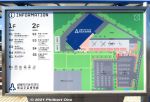
In March 2018, after undergoing major renovations and floor expansion, the museum reopened with a much larger floor space and more exhibits. The museum's name also added "Gifu" to indicate Gifu Prefecture's co-operation and ownership.The museum's nickname is "Sorahaku" (空宙博). As shown by this map, there are outdoor planes, one large building, and parking lots.
|
|

Outdoor exhibits of planes. Although the museum is next to Gifu Airbase, the airbase and runway cannot be seen from the museum.Museum hours: 10:00 am to 5:00 pm (till 6:00 pm on weekends and national holidays), closed on the first Tuesday of the month (open if it's a national holiday and closed the next day instead) and Dec. 28 to Jan. 2. 屋外実機展示場
|
|
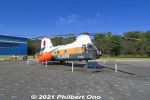
Kawasaki-Vertol KV-107IIA-4 helicopter that was used by the Japan Air Self-Defense Force from 1973 to 1995. 川崎 V107-Aヘリコプター
|
|
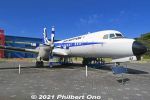
YS-11A, Japan's first passenger plane built after World War II. In service from the 1960s to 1995. Displayed at Gifu-Kakamigahara Air and Space Museum.
|
|
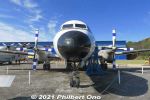
Front of YS-11A. 日本航空機製造 YS-11A-500R 中型輸送機
|
|
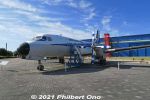
The YS-11A is the only plane where the public could go inside, but it was closed due to coronavirus in 2021.
|
|

Too bad the YS-11A was closed due to the pandemic. 日本航空機製造 YS-11A-500R 中型輸送機
|
|

About the YS-11A.
|
|
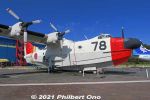
US-1A 9078 rescue plane that flew from 1983 to 1995. 新明和US-1A救難飛行艇
|
|
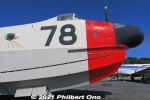
US-1A 9078. These outdoor planes are painted anew every several years.
|
|
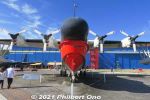
Nose of US-1A 9078
|
|
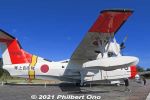
US-1A 9078
|
|
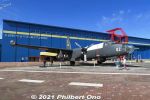
P-2J was an anti-submarine patrol aircraft. Detects and attacks submarines. Flew from 1979 to 1994. 川崎P2-J対潜哨戒機
|
|
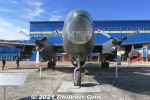
Nose of P-2J. The plane was based on the US Navy's P2-V7 Neptune.
|
|

Rear of P-2J. Next to the outdoor planes is a grassy lawn for kids to run around. No balls, frisbees, or tents allowed. 川崎P2-J対潜哨戒機
|
|
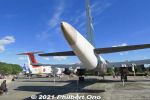
Rear of P-2J.
|
|
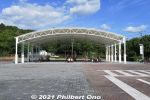
Outdoor Event Tent.
|
|
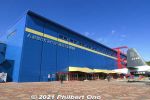
Museum's big, blue, two-story building is like an airplane hangar. The first floor has over 30 retired airplanes and replicas. The second floor has space-related exhibits. Expect to spend at least a few hours.
|
|
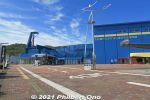
Entrance to the museum is here on the left side of the building. Admission charged. (Free admission on Nov. 3, Culture Day.)
|
|
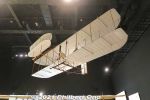
The Wright Flyer (actual size replica) is one of the first airplanes you see. ライトフライヤー
|
|

About the Wright Flyer, the world's first powered airplane.
|
|
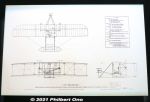
About the Wright Flyer.
|
|
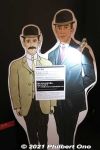
Wright Brothers
|
|
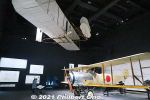
Wright Flyer in the same room as another plane. 乙式一型偵察機(サルムソン2A2)
|
|
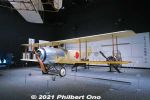
Salmson 2A2 was built in Gifu under a license from France. Production started in 1922 by Kawasaki Dockyard Co., Ltd., starting Japan's aviation industry. 乙式一型偵察機(サルムソン2A2)
|
|
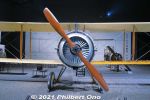
Front of Salmson 2A2. 乙式一型偵察機(サルムソン2A2)
|
|
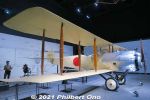
Salmson 2A2 (1/1 scale model). 乙式一型偵察機(サルムソン2A2)
|
|

View of Salmson 2A2's tail underneath. It's hollow. 乙式一型偵察機(サルムソン2A2)
|
|
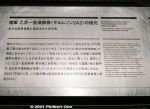
About the Salmson 2A2.
|
|
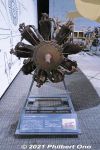
La Rhone propeller engine Type C commonly used in planes from 1910 to 1920.
|
|
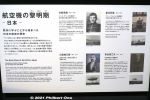
Japanese aviation industry pioneers.
|
|

All the planes which first flew in Japan here in Kakamigahara.
|
|

All the planes which first flew in Japan here in Kakamigahara.
|
|

Chronology of Japan's aviation history from 1903. In 1910, the first powered flights in Japan were conducted with planes purchased from Germany and France. Japan learned about planes from the West.
|
|

Chronology of Japan's aviation history. The model on the right is the Type 92 Heavy Bomber that first flew in 1931.
|
|

Chronology of Japan's aviation history.
|
|
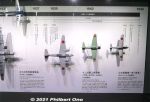
Chronology of Japan's aviation history until 1945. Models of the Zero fighter and Hien fighter displayed.
|
|

The museum's highlight piece is this restored Kawasaki Ki-61 Hien fighter prototype, the only one in the world.
|
|
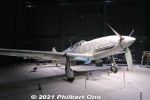
Kawasaki Ki-61 Hien fighter was used by the Japanese Army. 三式戦闘機二型「飛燕」(川崎キ61-II改)
|
|
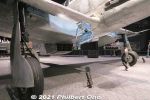
Kawasaki Ki-61 Hien fighter
|
|

About the Kawasaki Ki-61 Hien fighter.
|
|
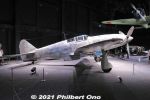
Kawasaki Ki-61 Hien fighter 三式戦闘機二型「飛燕」(川崎キ61-II改)
|
|
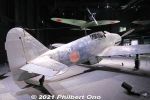
Kawasaki Ki-61 Hien fighter
|
|

Kawasaki Ki-61 Hien fighter
|
|

Kawasaki Ki-61 Hien fighter
|
|

Rear of Kawasaki Ki-61 Hien fighter.
|
|
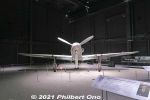
Front of Kawasaki Ki-61 Hien fighter.
|
|
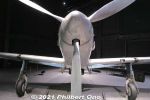
Prop of Kawasaki Ki-61 Hien fighter.
|
|
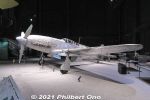
Kawasaki Ki-61 Hien fighter. 三式戦闘機二型「飛燕」(川崎キ61-II改)
|
|

About Kawasaki Ki-61 Hien fighter. 三式戦闘機二型「飛燕」(川崎キ61-II改)
|
|

Doi Takeo designed many of the Japanese Army's planes.
|
|
|
|
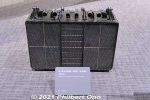
Airplane radiator to cool the engine.
|
|
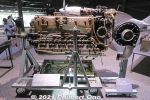
Engine used on the Hien fighter. 川崎 ハ140エンジン(「飛燕」二型搭載)
|
|
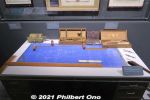
Airplane design drafting table and implements.
|
|
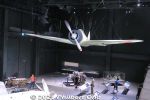
Full-size replica of Mitsubishi A6M1 Zero fighter prototype. 十二試艦上戦闘機(「零戦」試作機)(三菱A6M1) (1/1模型)
|
|
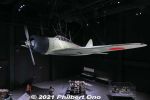
Full-size replica of Mitsubishi A6M1 Zero fighter prototype. The Zero was carrier based and used for the attack on Pearl Harbor. 十二試艦上戦闘機(「零戦」試作機)(三菱A6M1) (1/1模型)
|
|

Mitsubishi A6M1 Zero fighter prototype replica. 十二試艦上戦闘機(「零戦」試作機)(三菱A6M1) (1/1模型)
|
|
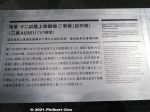
About the Mitsubishi A6M1 Zero fighter prototype. The Zero fighter first flew at Kakamigahara. About 10,000 were made.
|
|
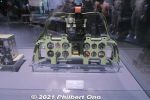
川崎 ハ140エンジン(「飛燕」二型搭載)
|
|
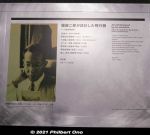
About Horikoshi Jiro who designed the Zero fighter and later the YS-11.
|
|
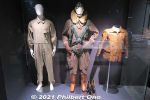
L-R: Aircraft mechanic's uniform, fighter pilot's flight suit, and pilot's jacket. Dating from the 1930s-40s.
|
|
|
|
|
|
|
|
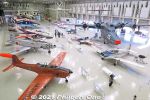
Main display hall of airplanes at Gifu-Kakamigahara Air and Space Museum. A lineup of post-World War II aircraft.
|
|
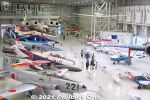
Very impressive lineup of planes on both sides. A few also hang from the ceiling.
|
|
|
|
|
|
|
|
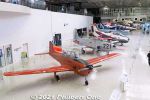
Kawasaki KAT-1, training plane dated 1954.
|
|
|
|
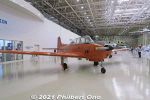
Kawasaki KAT-1
|
|

Kawasaki KAT-1, training aircraft.
|
|
|
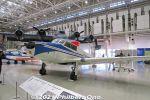
Kawasaki KAL-1 from 19523, the first plane designed and produced in Kakamigahara after World War II.
|
|

Kawasaki KAL-1
|
|
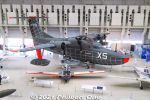
UF-XS Experimental Flying Boat based on Grumman UF-1 Albatross. UF-XS実験飛行艇
|
|
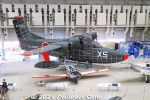
UF-XS Experimental Flying Boat UF-XS実験飛行艇
|
|
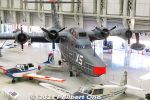
UF-XS Experimental Flying Boat
|
|
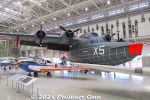
UF-XS Experimental Flying Boat (rear).
|
|
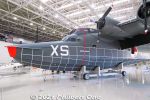
UF-XS Experimental Flying Boat. Note that none of the planes can be entered. UF-XS実験飛行艇
|
|
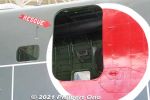
Open door of UF-XS Experimental Flying Boat.
|
|

X1G1B High-Lift Research Aircraft based on Saab 91B Safir.
|
|
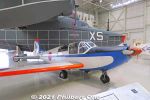
X1G1B High-Lift Research Aircraft
|
|
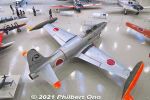
Lockheed T-33A, dated 1956. Built by Kawasaki and retired in 1994. Brought to the museum by helicopter from Gifu Airbase.
|
|
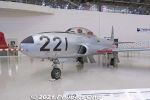
Lockheed T-33A
|
|
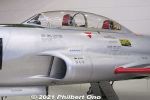
Lockheed T-33A cockpit.
|
|
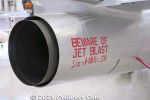
Lockheed T-33A engine exhaust.
|
|
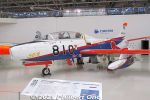
Fuji T-1B from 1960. First jet aircraft made in Japan.
|
|
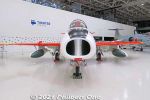
Fuji T-1B
|
|
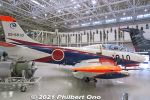
Fuji T-1B
|
|

Fuji T-1B
|
|
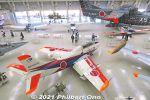
Fuji T-1B
|
|
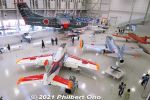
Fuji T-1B
|
|
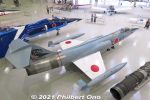
Mitsubishi-Lockheed F-104J Starfighter dating from 1963. Retired in 1986.
|
|
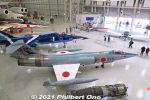
Mitsubishi-Lockheed F-104J Starfighter
|
|
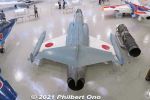
Mitsubishi-Lockheed F-104J Starfighter
|
|
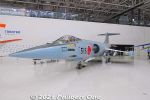
F-104J Starfighter
|
|
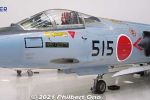
F-104J Starfighter cockpit.
|
|
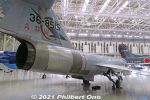
F-104J Starfighter jet exhaust.
|
|
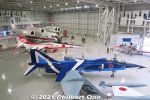
Mitsubishi T-2 Blue Impulse aerobatic team jet from 1981. Retired in 1995. The Blue Impulse aerobatic team gave air shows at Gifu Airbase.
|
|
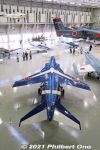
Mitsubishi T-2 T-2高等練習機
|
|
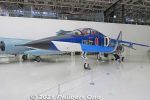
Mitsubishi T-2 Blue Impulse aerobatic jet. T-2高等練習機
|
|
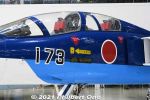
Mitsubishi T-2 Blue Impulse aerobatic jet.
|
|
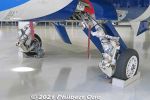
Gear of Mitsubishi T-2 Blue Impulse aerobatic jet.
|
|
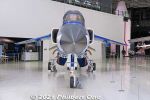
Nose of Mitsubishi T-2 Blue Impulse aerobatic jet.
|
|
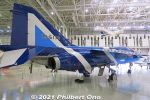
Mitsubishi T-2 Blue Impulse aerobatic jet.
|
|
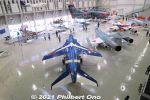
Mitsubishi T-2 Blue Impulse aerobatic jet.
|
|
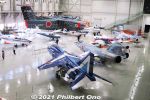
Mitsubishi T-2 Blue Impulse aerobatic jet.
|
|

N-62 Eaglet light aircraft from 1964. By Nihon University and Itochu.
|
|
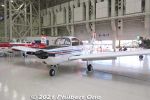
Fuji FA-200 Aero Subaru monoplane from the 1960s.
|
|
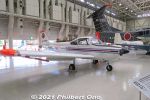
Fuji FA-200 Aero Subaru monoplane from the 1960s.
|
|
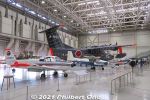
Fuji FA-200
|
|
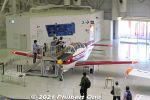
Fuji T-3 trainer plane from 1974. During certain times, visitors can sit in the cockpit for photos. T-3コックピット搭乗体験
|
|
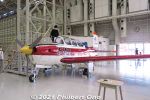
Fuji T-3 trainer plane. There was steps to see the cockpit. T-3コックピット搭乗体験
|
|
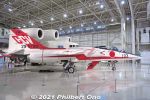
Mitsubishi T-2 Control-Configured Vehicle (CCV) from 1972. Research jet. T-2CCV研究機
|
|

Mitsubishi T-2 Control-Configured Vehicle (CCV)
|
|
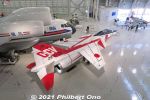
Mitsubishi T-2 Control-Configured Vehicle (CCV)
|
|
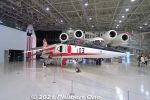
Mitsubishi T-2 Control-Configured Vehicle (CCV) Research jet. T-2CCV研究機
|
|

Research jet. T-2CCV研究機
|
|
|
|
|
|

NAL Asuka STOL Research Aircraft (National Aerospace Laboratory) flew during 1986–1989. 低騒音STOL実験機「飛鳥」
|
|
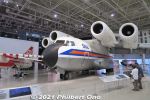
NAL Asuka STOL Research Aircraft was used to experiment with short takeoffs and landings. 低騒音STOL実験機「飛鳥」
|
|
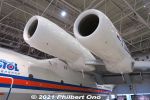
NAL Asuka STOL Research Aircraft
|
|
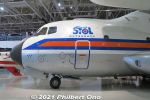
NAL Asuka STOL Research Aircraft 低騒音STOL実験機「飛鳥」
|
|
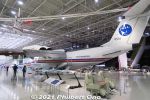
NAL Asuka STOL Research Aircraft
|
|

NAL Asuka STOL Research Aircraft 低騒音STOL実験機「飛鳥」
|
|
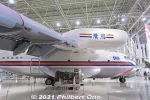
NAL Asuka STOL Research Aircraft
|
|

NAL Asuka STOL Research Aircraft
|
|
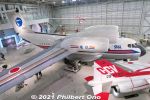
NAL Asuka STOL Research Aircraft
|
|
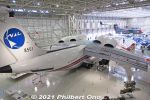
NAL Asuka STOL Research Aircraft
|
|

Rear of NAL Asuka STOL Research Aircraft.
|
|
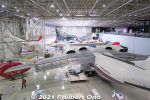
NAL Asuka STOL Research Aircraft
|
|
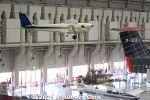
Cygnus powered sailplane.
|
|
|
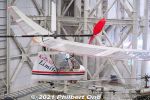
HYPER CHick "KoToNo Limited" is a pedal-powered plane flown by a woman. It was named after the woman pilot, HORI Kotono. Set a new record in July 1992 in Shizuoka Prefecture.
|
|
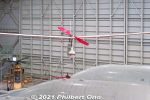
KoToNo Limited also placed 4th at the 16th Birdman Rally at Lake Biwa in Aug. 1992.
|
|
|
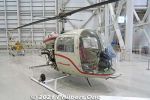
Toward the back of the hall are helicopters. This is Kawasaki-Bell 47G3B-KH4 from 1971.
|
|
|
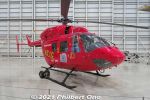
BK117P-5 helicopter
|
|
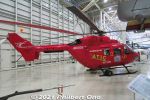
BK117P-5 helicopter
|
|

Kawasaki-Hughes OH-6J helicopter from 1974.
|
|
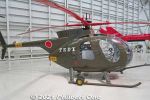
Kawasaki-Hughes OH-6J helicopter. I remember seeing this in movies.
|
|
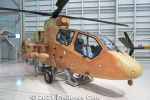
Kawasaki XOH-1 wooden mockup helicopter from the 1990s.
|
|
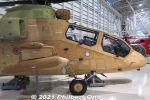
Kawasaki XOH-1 wooden mockup helicopter
|
|

Kawasaki XOH-1 wooden mockup helicopter cockpit.
|
|
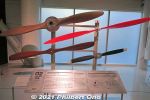
Different airplane propellers. Very detailed info about most of the museum's planes is at j-hangarspace.jp.
|
|
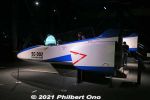
Flight simulator
|
|
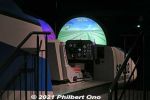
Flight simulator
|
|
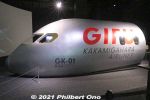
Flight simulator (Closed when I was there.)
|
|

The space-related exhibits are on the 2nd floor.
|
|
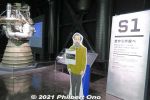
Entering the space museum on the second floor.
|
|

H-II rocket. H-IIロケット フェアリング
|
|
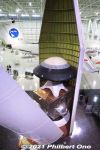
H-II rocket and payload. H-IIロケット フェアリング
|
|
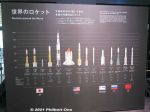
Rockets from around the world. Saturn V (Apollo program) was by far the largest.
|
|
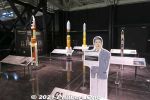
Japan's rockets, all unmanned. Cutout of Itokawa Hideo, aeronautical engineer.
|
|
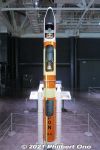
H-II two-stage rocket made with 100% Japanese technologies.
|
|
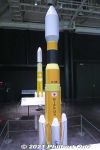
H-IIB rocket that took the Kounotori cargo spacecraft to the ISS.
|
|
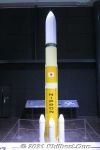
H3 rocket (1/20 scale model). H3ロケット(1/20模型)
|
|

Epsilon rocket.
|
|
|

US Space Shuttle (1/25 scale model). スペースシャトル(1/25模型)
|
|

US Space Shuttle (1/25 scale model). スペースシャトル(1/25模型)
|
|
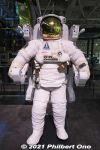
NASA astronaut spacesuit and propulsion unit (actual size). 宇宙服と宇宙遊泳噴射装置(1/1模型)
|
|
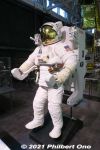
NASA astronaut spacesuit and propulsion unit (actual size). 宇宙服と宇宙遊泳噴射装置(1/1模型)
|
|

US astronaut spacesuit helmet.
|
|
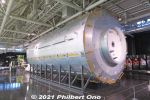
Japan's Kibo module (full-scale replica) for International Space Station (ISS). 日本実験棟「きぼう」
|
|

Japan's Kibo experiment module (full-scale replica) for International Space Station (ISS). We can go inside. 日本実験棟「きぼう」
|
|
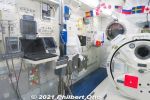
Inside Japan's Kibo module (replica) for International Space Station (ISS).
|
|
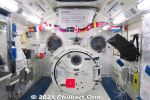
Inside Japan's Kibo module (replica) for International Space Station (ISS). The module is used to conduct various experiments in space.
|
|
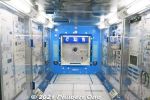
Inside Japan's Kibo module (replica) for International Space Station (ISS).
|
|
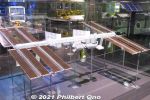
Model of International Space Station (ISS).
|
|
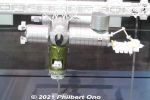
On the International Space Station (ISS), Japan's Kibo module is attached on the right and the Kounotori cargo vehicle is attached on the bottom.Kounotori was developed by the Japan Aerospace Exploration Agency (JAXA or Japan’s NASA) and used from Sept. 2009 to Aug. 2020 as expendable cargo spacecraft for delivering supplies and experiments to the International Space Station.
|
|
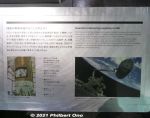
After nine launches and cargo spacecrafts, Kounotori was finally retired in Aug. 2020. Kounotori will be replaced with a new cargo spacecraft to launch in 2022. Nickname unknown as of this writing.
|
|

Japanese astronauts from 1990 to present day.
|
|

Japanese astronauts starting with Akiyama Toyohiro, the first Japanese national to go into space in Dec. 1990. He went to Russia's Mir space station via Soyuz rocket. His trip was sponsored by his company TBS where he was a TV journalist.
|
|

Mohri Mamoru became the first Japanese astronaut to be sent by Japan's space program in Sept. 1992. The first Japanese astronaut to travel on the US Space Shuttle (Endeavour) where he worked in Spacelab-J.The third Japanese in space was the first Japanese and first Asian woman in space, Mukai Chiaki, a cardiovascular surgeon.
|
|

Japanese astronaut Yamazaki Naoko went aboard US Space Shuttle Discovery in April 2010 to the International Space Station (STS-131). More photos of her and her mission here.She is also the Gifu-Kakamigahara Air and Space Museum's ambassador.
|
|
|

Exhibit about KAGRA (Kamioka Gravitational Wave Detector) in Kamioka Observatory in Gifu Prefecture.
|
|
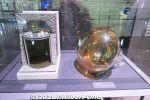
Scale model of the Super-Kamiokande and a photomultiplier tube that detects light from Cherenkov radiation. The Super-Kamiokande has 13,000 of these photomultiplier tubes.
|
|
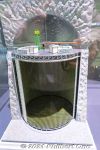
1/135 scale model of KAGRA's Super Kamiokande gravitational wave observatory built underground to detect neutrino, dark matter, and gravitational waves. Cylindrical stainless steel tank about 40 m in height and diameter, filled with ultrapure water.
|
|
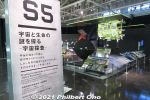
Section S5 is about space probes to learn more about the origin of space and life.
|
|

Hayabusa II Mission Simulator. Hayabusa II brought back to Earth asteroid samples from near-Earth asteroid 162173 Ryugu in Dec. 2020.
|
|
|
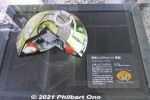
Full-scale model of Hayabusa II re-entry capsule. はやぶさ2
|
|
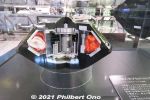
Cross section of Hayabusa II re-entry capsule. はやぶさ2
|
|
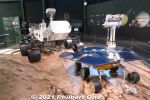
Mars rovers (full-size replicas). Foreground is 1/10 scale model of IKAROS (Interplanetary Kite-craft Accelerated by Radiation Of the Sun). 火星探査車マーズ・エクスプロレーション・ローバー (1/1模型)
|
|
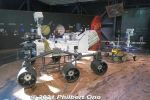
Mars rover nicknamed "Curiosity." Landed on Mars in Aug. 2012. キュリオシティ(1/1模型)
|
|
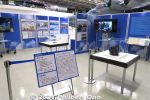
On the first floor, a small exhibition about commercial aviation.
|
|

Small exhibition about commercial aviation.
|
|

Passenger jets that made long-distance travel practical. Thanks to the revolutionary jet engine. Upper photo is a DC-6 prop plane that first flew in 1947 and which JAL used for its first overseas flight. Lower photo is a DC-8 jet plane first flew in 1958.
|
|

Improved aircraft technologies and materials have improved the plane's range and efficiency.
|
|

Passenger planes of the future. JAXA is developing a hybrid plane using electricity.
|
|
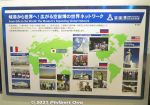
Sister aviation museums overseas.
|
|
|
|
|
|
|
|
|